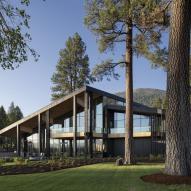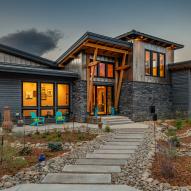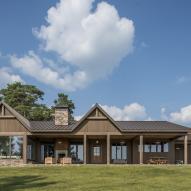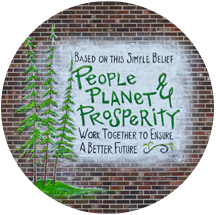Burning for Sustainability
We love wood; we also enjoy burning it. Take for example our Shou Sugi Ban product line, where we touch flame to timber in order to create a fantastic deep dark char. Regardless of our wood’s eventual end usage, we are cognizant of our responsibility to find and use sustainability sourced materials. We are constantly looking for ways to lessen our impact on the environment while also increasing our aesthetic design ideas.
While Cedar has traditionally been the species favored for the long-practiced Shou Sugi Ban burning process, with the high demand put on it, as well as its being threatened by over-foresting, we feel that working with cedar isn’t worth the resulting environmental impact.
Instead, we use three responsibly sourced species to form the foundation of our Shou Sugi Ban line. “It’s a collaborative discussion, Michelle (East Coast Acquisitions) and I work together to find FSC graded wood,” says Stacy Wallace who is in charge of Pioneer Millworks west coast Acquisitions and Logistics. The criteria observed by our acquisitions teams when sourcing materials focuses on how the timber will fit our prospective usage, price vs. proximity, and most importantly, if the wood is harvested sustainably.
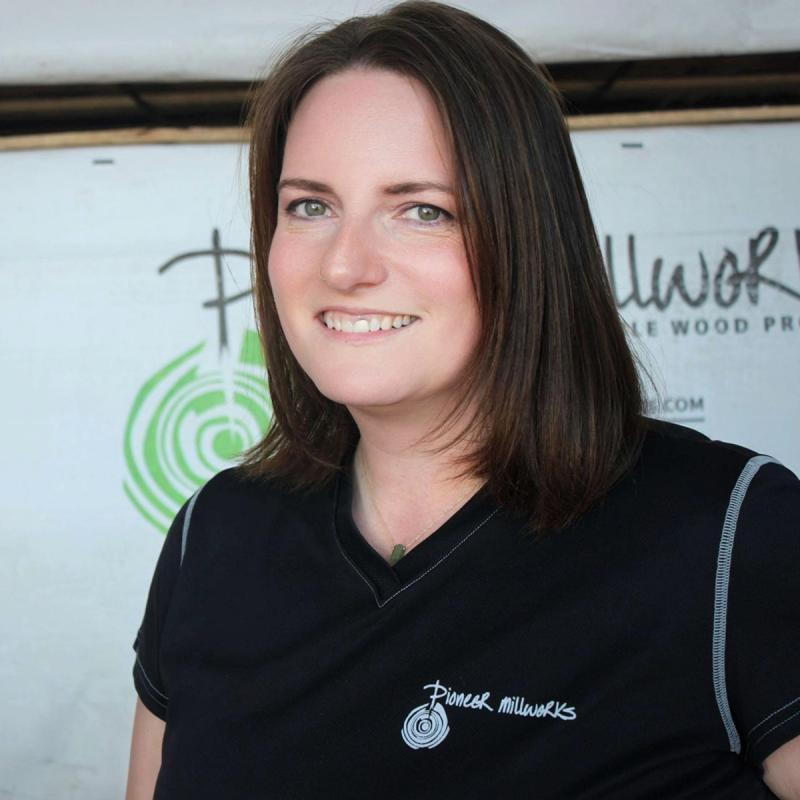
“The fir and the larch are locally sourced, so it reduces our carbon footprint,” says Wallace. “The larch is our flagship product, and it’s not something that a lot of mills do. Usually when mills have larch its mixed in with Doug fir.”
Larch is an underutilized softwood that grows side by side with and is a bi product of Douglas fir. “Larch is a little heartier than fir is,” says Wallace, “It’s equal or better in longevity to cedar.”
With a tight knotty grain and a range of naturally occurring hues, Larch provides several characteristics that make it the perfect wood species for Shou Sugi Ban. “The wood tones of Larch are really nice,” says Alex Monachino, product acquisitions and sampling for Pioneer Millworks. Underutilized and abundantly available, Larch even thrives in areas where fires have burned the landscape. This inherent heartiness makes it the perfect substrate for any use that we can come up with.
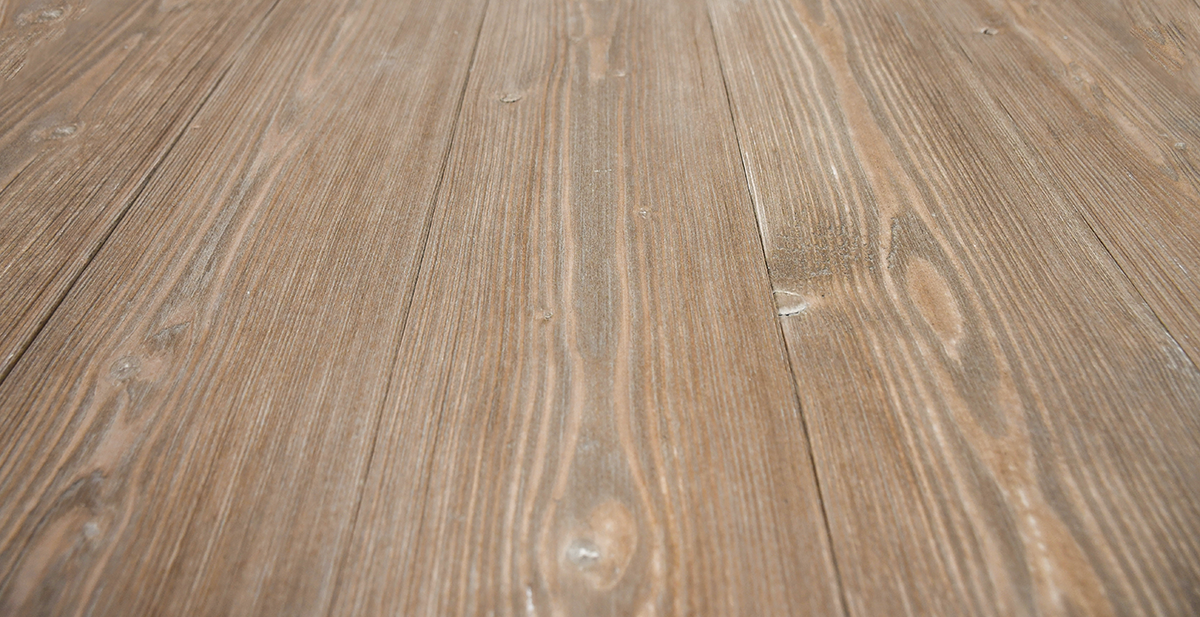
Additionally, all of our Larch products are made from sustainably sourced PEFC (Programme for the Endorsement of Forest Certification) trees grown in the Pacific Northwest.
Accoya®, the second of our sustainable triad, is considered the criterion for sustainable and healthy outdoor building materials. It is grown and harvested in FSC-Certified® forests and reaches full maturity at 30 years. Accoya is a modified softwood. Radata pine, a quick-growing tree in sustainably managed forests is harvested, submerged in a vinegar like mixture, and then put under pressure. This process, called acetylation, changes the inherent molecular structure of the wood and prevents the interior cells from absorbing water, instilling this softwood with the properties of a highly stable hardwood.
Accoya® is a sustainable material choice that helps us to offset global challenges like climate change. From source to production and through to the end of its life cycle, the sustainability of Accoya comes full circle. Accredited by Forest Stewardship Council® (FSC) and Cradle to Cradle (C2C), Accoya is the only construction material in the world to achieve C2C Platinum Certification™ for Material Health.
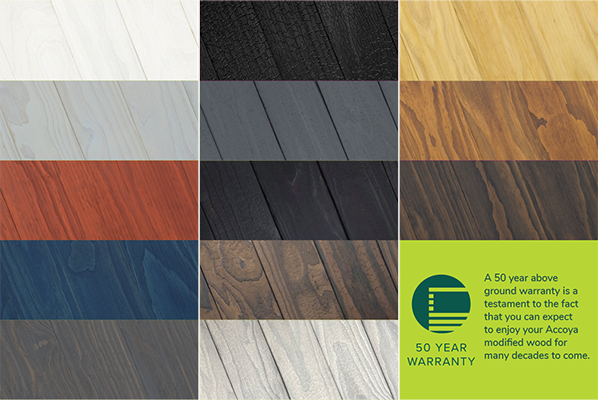
Accoya® has an amazing warranty, it has a 50 year above ground warranty and a 25 year in ground or freshwater warranty,” says Wallace. In the end, Accoya® is a high performing sustainable lumber that exceeds resource depleting, and heavily carbon-polluting alternatives. The bonus is that Accoya’s® grain structure and few knots also take well to our standard color finishes, while brushing adds deep color saturation & adhesion.
Douglas Fir, our third Shou Sugi Ban species, is one of the most important timber species indigenous to North America. Recognizable as a Christmas Tree, it grows exceptionally tall, strong, and one of the best building materials you can use. It’s multitude of uses ranges from boats, buildings, and timber frame homes.
“The first priority with Douglas fir is that we can find an FSC rated wood and someone that has FSC qualifications and can pass that on to us,” says Wallace. The wood’s distinctive fingerprint can be found in its distinctive grain patterns and regal beauty. Its signature vertical grain is a sought-after design aesthetic and an important feature in its multitude of usages.
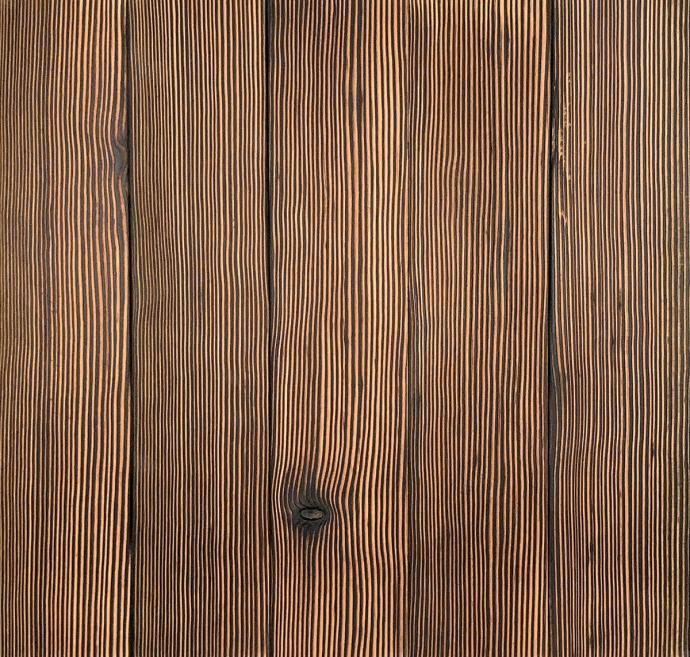
Most importantly, Douglas Fir works for us because of its sustainability. Douglas Fir is FSC-Certified® and responsibly harvested in the forests of the pacific Northwest. It’s ideal for interior and exterior cladding and as a new fresh sawn option it is unparalleled in its sustainability, responsible harvesting, and quick growth cycle. Douglas fir is a North American material that keeps production domestic and shipping to a minimum. The combination of look, feel, and strength make it a conscientious choice for any use that we can come up with.
We picked Larch, Douglas fir, and Accoya® as the sustainable substrates of our Shou Sugi Ban line because of their ability to burn, their inherent beauty, and their adherence to our ethos. Every single bit of wood we source will never go to waste. “We’ve been doing the burning process long enough where we know what works for us. A lot of times we run batches that catch the char a little more than others. But we have the ability to make two separate piles when we do that,” says Wallace. “The lesser burned stuff goes in with the pile that we are going to be brushing back, whereas the stuff that really gets the burn we can use for later for our deep char.”


